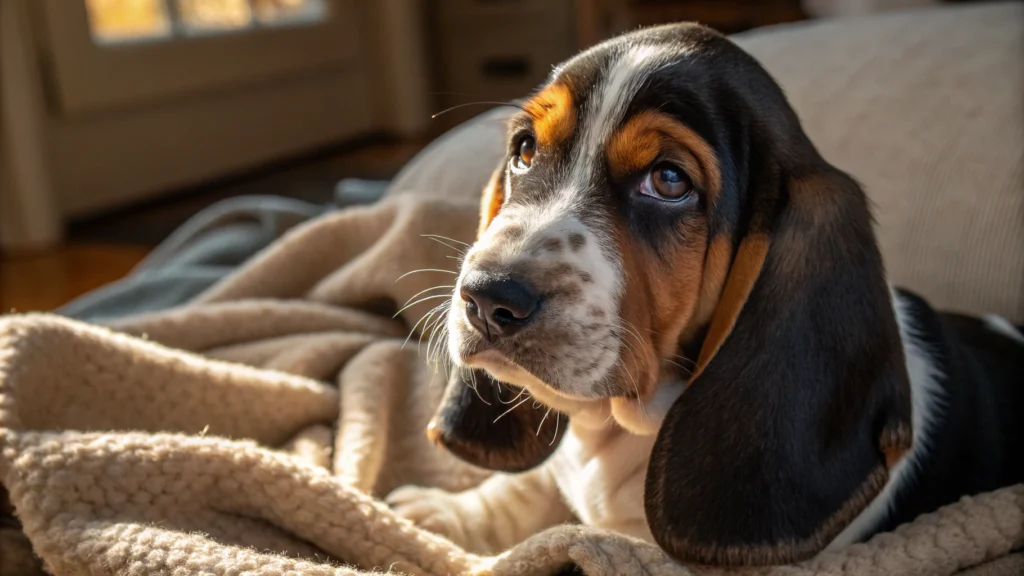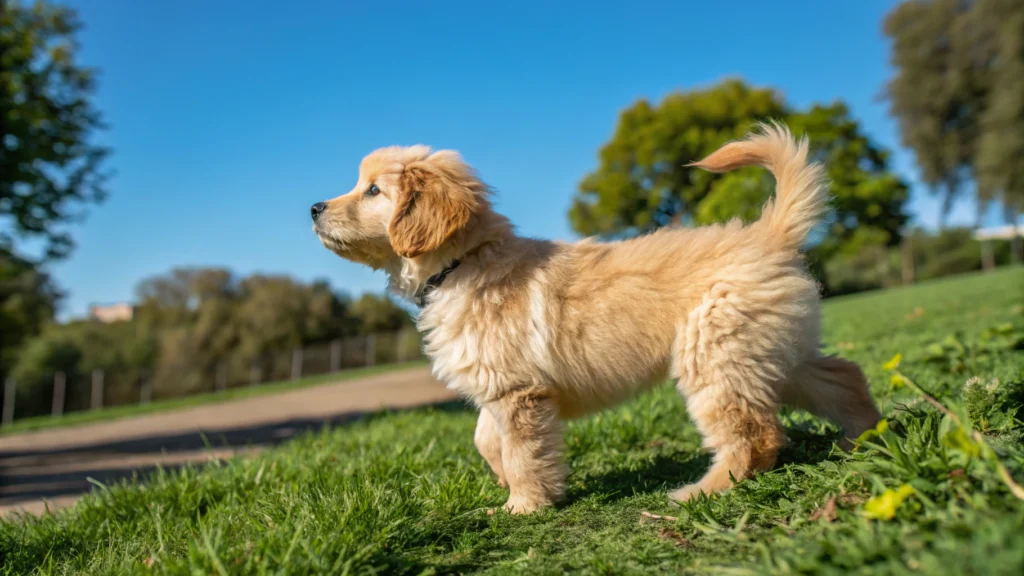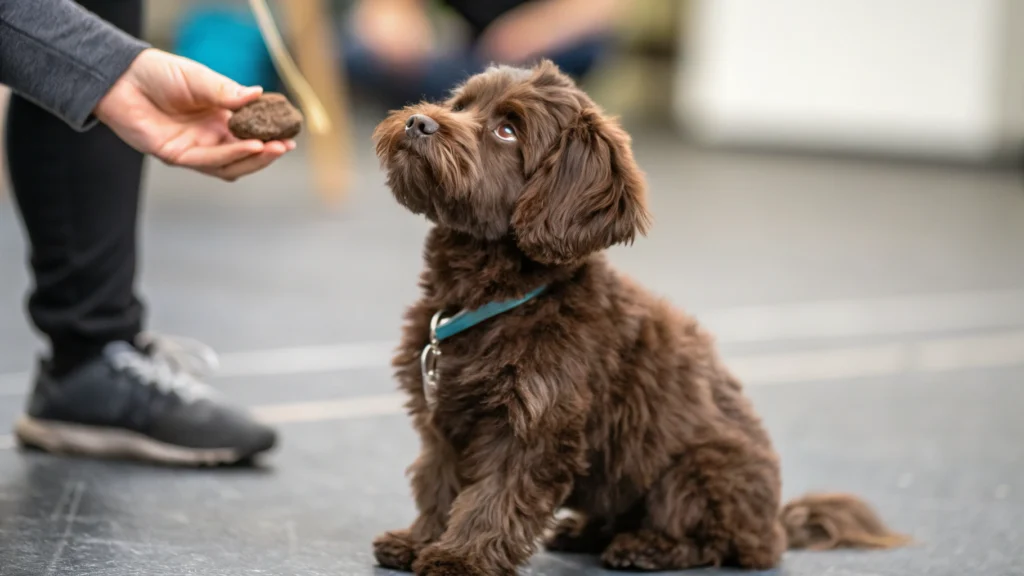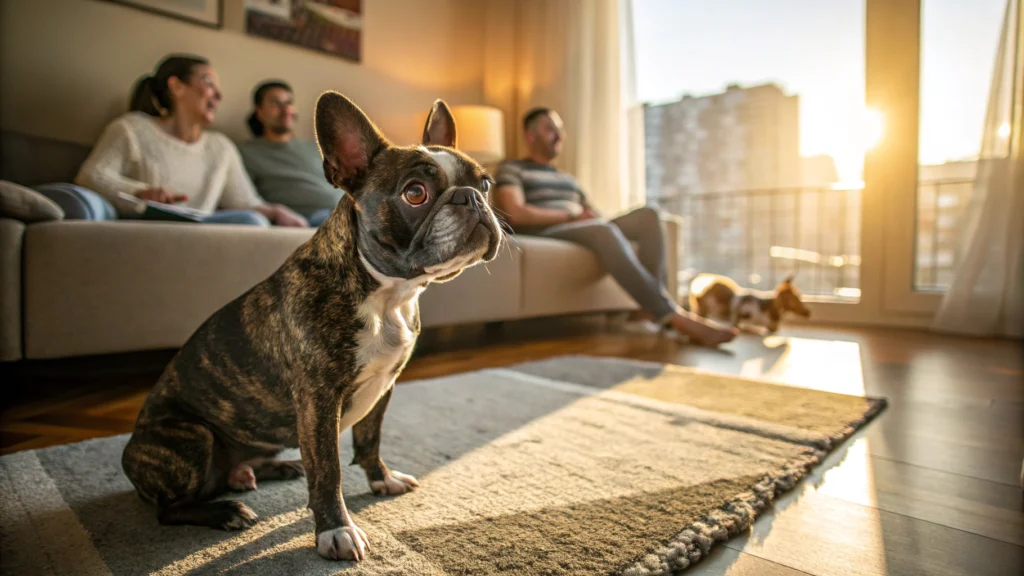
Introduction
The Puzzling Phenomenon of Dog Panting
You know the sound – a dog panting, or that rhythmic huffing and puffing is as recognizable as a wagging tail! But when it is seemingly incessant or more intense than normal, it raises some concern. Why is my dog panting so much? has gone off in the heads of dog owners everywhere, prompting them to investigate this canine behavior. Panting is part of a dog’s natural instinctive response, but excessive panting may signal something underlying, whether benign or serious, and would be worth investigating. Understanding excessive panting is critical for ensuring your dog’s well-being.
Why Managing Panting is Important
Panting is more than heavy breathing…it’s a clue to a dog’s emotional and physical state. When a dog owner understands when panting is warranted or when it goes beyond the threshold, he or she can do something in a timely way. The article will examine many different reasons for excessive panting, providing information and tips to help optimize the health of dogs. Environmental conditions to medical conditions, knowing the attribution of leash pulling can help dog owners take proactive measures.
Normal Panting: A Natural Canine Behavior
Panting as Thermoregulation
While humans rely on sweat glands, dogs will regulate body temperature through panting. During panting, dogs are taking rapid breaths—both inhaling and exhaling air. At the same time, they are evaporating the moisture that has been deposited by saliva on their tongues and within their respiratory tracts. Through this process, dogs release heat into the environment.
While most dogs will pant after a good game, they will also pant in anticipation of oncoming breaks in play and in moderate or warm weather. The American Kennel Club states that most dogs will pant to cool off, and it will be considered normal if it is limited in quantity. If panting persists for lengthy periods of time, regardless of temperature or physical exertion—there may be more going on than just a warm day.
Exercise Versus Excitement Triggers
A good romp at the park or the sight of their favorite toy may cause a dog to exhibit panting behaviors. As dogs engage in physical activity their oxygen demands for the muscle cells increases, which ultimately leads to rapid breathing. Similarly, a dog may panted out of excitement because of a friend or neighbor’s arrival or because of the change in location while leaving for a car ride.
These episodes of panting are typically short duration, and subside once the motion of excitement calms. However, if you have ever wondered, “why is my dog panting so much” after he or she has rested (and is at home), then something may be wrong.
Environmental Factors Cause Panting
Hot Weather and Humidity
Warm weather is an obvious one for excessive panting. Cost to cool off in hot weather or humidity is difficult for dogs, as evaporation of moisture is not effective. Prolonged exposure to high temperatures can result in overheating (heat stress), and if not managed, can lead to heatstroke. The ASPCA advises that brachycephalic breeds (Bulldogs) are especially at risk. Essential shade and water should help alleviate this risk.
Poor Ventilation and Restriction
A hot setting, or environment, can make panting worse (i.e. an enclosed/non airconditioned room or a vehicle with inadequate ventilation.) Always limited airflow means a dog cannot cool off; more efforts of respiratory breathing results in excessive panting.
Pet owners may observe that their dogs are panting excessively when they have very limited airflow, showing their discomfort. Why is my dog panting so much in this scenario? Many dogs are asking for better quality (i.e. fresher) air, or to be in better ventilated locations. When you allow better airflow you can fix the problem immediately.
Physical Health Conditions that cause Excessive Panting
Pain and Discomfort
Panting can also be a method for dogs to communicate pain. Painful injuries and arthritis, or even pain or discomfort in internal organs causing gastrointestinal upsets may be the reason a dog is breathing heavy. Dogs cannot express pain in the same manner as humans, but panting becomes an important symptom. The Merck Veterinary Manual points out persistent panting without exposure to heat is suggestive of pain.
Breathing or Cardiac Issues
Life-threatening medical problems, such as pneumonia, cardiac disease, or pulmonary disorders can cause rapid labored breathing and lots of panting. These conditions cause the animal to breathe harder which leaves a decreased opportunity for oxygen exchange. Another possible factor is Cushing’s disease, which causes increased metabolic stress as a result of having too much cortisol.
If there is lethargy or in severe cases coughing along with prompt panting, the American Veterinary Medical Association indicated you should seek immediate medical care for the question, why is my dog panting so much.
Emotional and Psychological Factors
Anxious and Stress Responses
Dogs experience emotional upheaval, just like people do. dogs may begin to pant rapidly in response to anxiety related to thunderstorms, fireworks, or separation. The panting is the body’s response to an increase of stress hormones in the body.
According to PetMD, stress-related panting is usually associated with pacing or trembling. Reduce the stress response by isolating the dog in an area of the house where it feels safe (e.g. cage or kennel focused only on the dog’s security), and not bond members will be allowed in that space.
Overstimulation and Excitement
A dog that has received too many stimuli related to a new place, or animal or new and “rowdy” playmates can begin panting disproportionately. This is an increase in adrenaline much like hyperventilation. This behavior is temporary; however, if chronic overstimulation occurs, the dog will collapse from fatigue. When an owner is involved in an overstimulating experience such as the one described and wonders, why is my dog panting so much, the owner should view calming measures such as quiet living time can assist the dog with balance.
Medications and Medical Treatments
Side Effects of Common Drugs
Panting can occur as a side effect of medications such as corticosteroids or analgesics. These types of drugs can alter metabolic pathways or respiratory pathways and can stimulate respiration. For example, prednisone is a commonly prescribed anti-inflammatory medication that can cause panting, according to VCA Animal Hospitals. If your dog is panting after starting a new medication, it might be best to consult your veterinarian to see whether there are possible alternatives.
Panting Following Recovery from Treatments
Sometimes, panting can occur in the post-operative recovery period or the post-treatment period (for example, chemotherapy or radiation treatment) when the body has been stressed. These procedures can increase the body’s exercise level and raise respiratory rates. Panting is usually temporary, but prolonged periods of panting after treatment can often indicate that follow-up care is required. Owners questioning why is my dog panting so much can work through the durations of panting episode and/or behaviors alongside the treatment.
When is it Time to See A Veterinarian
Potential Red Flags in Patterns of Panting
A profile of panting (the pattern or variability of the panting) can also help owners understand whether a trip to the vet is required. Although not all episodes of panting are necessarily medical emergencies, episodes should be considered when they are “sudden”, exceed normal rates of panting and/or accompanied by other symptoms (such as vomiting, weakness or pale, yellowish/purple convoluted portion of the gums which usually indicate heatstroke, poisoning or organ dysfunction).
The American Animal Hospital Association also noted that abnormal patterns with synonymous signals for respiratory function, even given circumstances, requires medical evaluation, so stop considering why is my dog panting so much and go seek medical assistance!
Steps To Diagnostic
Veterinarians can use blood tests, X-rays, or ultrasounds to diagnose the reason for excessive panting. While these form of diagnostic instrumentation can ask a question about hidden problems, such as infections or heart conditions, owner detail is also important: when did the panting occur, for how long, are their other symptoms, and so on. Moving quickly can prevent a secondary problem and make the dog comfortable again.
Preventative Measures and Home Care
Providing Comfortable Physical Environments
If the goal is to decrease panting, a cool and well-ventilated area is best. Depending of the home, using fans, air conditioning, or opening windows to create cross ventilation to cool the inside of the home’s temperature can be very helpful for dogs. Ample amounts of water and shaded areas to escape when a dog is outdoors, will protect dogs from overheating.
In these ways we answer the questions, “why is my dog panting so much”, with simple attention to environmental causes.
Monitoring and Managing Triggers
Implementing regular exercise, mental stimulation, and stress management will help keep panting in check. Owners should note the routines of their dogs, and at what time panting begins to occur more frequently. If anxiety is troubling the dog, sanity aid methods, such as puzzle toys or calm music can decrease anxiety driven panting. Regular monitoring will help find new problems earlier and in turn foster a healthier happier dog.
Conclusion Of why is my dog panting so much
Summary of the Causes of Panting
Excessive panting in dogs can have a variety causes such as thermoregulation, excitement or arousal, environmental factors, health, emotional distress, or medications. Each case will be unique and therefore requires assessment as to why does your dog keep panting so much. Through understanding the causes of panting, dog owners can separate normal and concerning panting behavior so that problem solving can occur in a timely manner.
Promoting Preventative Pet Care
The panting, breathing, sighing of your dog is their own form of language, it communicates either comfort or distress. Being aware of what their panting means allows the dog owner to act accordingly. Regular veterinary visits with love and caring dog ownership and documenting observed behaviors will be the foundation for effective canine ownership. Always seek advice from a veterinary professional when in doubt regarding uncertainties, as they will allow our dog owners to shift their mind from anxiety to assurance.
Sources
https://www.akc.org/expert-advice/health/why-do-dogs-pant/
https://www.petmd.com/dog/general-health/why-do-dogs-pant
https://www.aspca.org/pet-care/dog-care/hot-weather-safety-tips
https://www.humanesociety.org/resources/keep-pets-safe-heat
https://www.merckvetmanual.com/dog-owners/disorders-of-the-digestive-system-of-dogs/vomiting-and-regurgitation-in-dogs
https://www.avma.org/resources/pet-owners/petcare/hot-weather-pet-safety
https://vcahospitals.com/know-your-pet/cushings-disease-in-dogs
https://www.avma.org/resources/pet-owners/petcare/first-aid
https://vcahospitals.com/know-your-pet/prednisone-prednisolone
https://vcahospitals.com/know-your-pet/dyspnea-difficulty-breathing-in-dogs
You May Like It





